Yamaha Restio ISX-80 Review
Yamaha Restio ISX-80
Unleash your inner Laurence Llewelyn-Bowen with Yamaha’s chic Restio wireless speaker
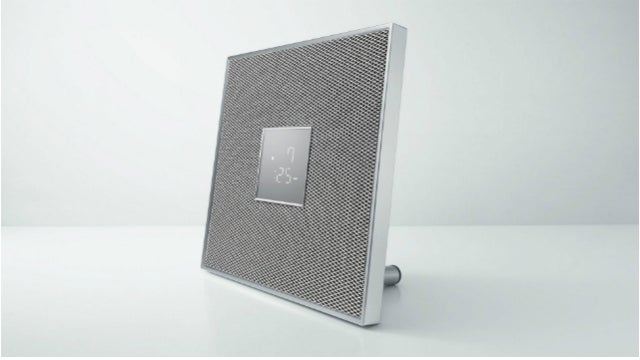
Verdict
Pros
- Gorgeous styling and solid build
- Easy-to-use smartphone app
- Good clarity, cohesion and volume
Cons
- Limited bass
- Narrow, boxed-in sound
- No Deezer, Qobuz or Tidal
- Clock display will divide opinion
Key Specifications
- Review Price: £349.00
- 2 x 15W power output
- Built-in Wi-Fi & Bluetooth
- DLNA, AirPlay, Napster, Spotify, Juke, internet radio
- MusicCast smartphone app with multiroom functionality
- Shelf or wall mountable
What is the Yamaha ISX-80?
These days, how an audio system looks is almost as important as how it sounds, a notion Yamaha has clearly taken on board with its new Restio speaker range. The stylish ISX-80 wireless speaker has been created from an interior design perspective, looking like a picture frame that can be placed on a shelf or hung on the wall.
But there’s substance behind the style. The ISX-80 is equipped with Wi-Fi and Bluetooth, allowing you to stream music from DLNA devices, AirPlay, Spotify and Napster.
Yamaha ISX-80 – Design and Connections
Parts of the ISX-80’s design are something of an acquired taste, but on the whole it’s a striking and distinctive speaker. In fact, at first glance you might not even realise it’s a speaker.
Related: Best Portable Speakers 2016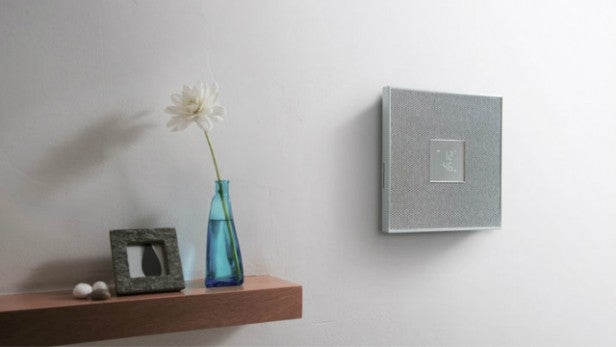
The 302 x 302mm square enclosure sports classy brushed silver edges, while the black steel mesh on the front panel conceals two 80mm woofers and two 30mm soft dome tweeters. The front mesh is available in white and purple finishes if you want to be really daring.
Build quality is impressive. All the materials have a premium feel and the parts are solidly bolted together. It measures 65mm deep, which makes it ideal for wall mounting using the keyhole fixings on the rear of the unit. Alternatively, you can prop it upright on a flat surface using a supplied metal rod that screws into the back.
Bang in the middle of the front panel is an illuminated clock display, which is my only real bone of contention with the design. The thin digits are stacked vertically, and the surrounding icons have a rather cheap look about them. An OLED display would have been far more attractive – but more expensive.
However, the display is clear and bright – and dimmable if it’s too distracting. It shows the time, selected input and volume level when adjusted. The surrounding silver trim is an eye-catching flourish.
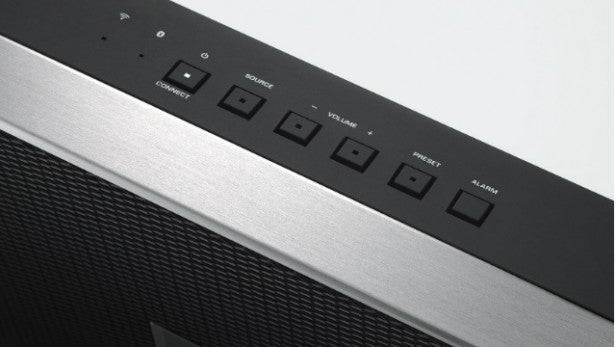
On top is a row of buttons that allow you to control volume, change inputs and activate the alarm. Two tiny LEDs indicate whether Wi-Fi or Bluetooth is selected.
Also on the back are two side-facing recesses, housing an FM radio antenna input on one side and a 3.5mm mini-jack input on the other. You’ll also find a switch that turns off the clock in standby.
Yamaha ISX-80 – Features
MusicCast is the highlight, allowing you to link up several speakers in different rooms and orchestrate playback from Yamaha’s MusicCast smartphone app. You can play the same song on them all, or stream different sources to each speaker.
Using the app, you can access tracks on PCs, NAS drives and other devices on your home network – including hi-res FLAC, ALAC and WAV – or stream music from Napster, Spotify, Juke and internet radio. It’s a decent selection, but Deezer, Qobuz or Tidal users will be disappointed.
The ISX-80 also supports AirPlay, making it easy to play music from Apple devices and iTunes, while built-in Bluetooth caters for everything else. You can even stream music from the ISX-80 to Bluetooth headphones if you want to listen in private.
The ISX-80 has a quoted power output of 2 x 15W and there’s an FM radio tuner with six presets; or 30 when using the app. The built-in alarm, snooze and sleep timers make this an ideal system for your bedside table.
Yamaha ISX-80 – Setup
Wireless speakers are a potential minefield for the uninitiated, but thankfully, Yamaha makes the setup process easy. It’s all carried out through the MusicCast app – once downloaded onto your phone or tablet, simply tap the “Add Device” option and follow the instructions.
Hold down the “Connect” button on top of the unit and wait for the app to find your device. It doesn’t take long before you’re good to go.
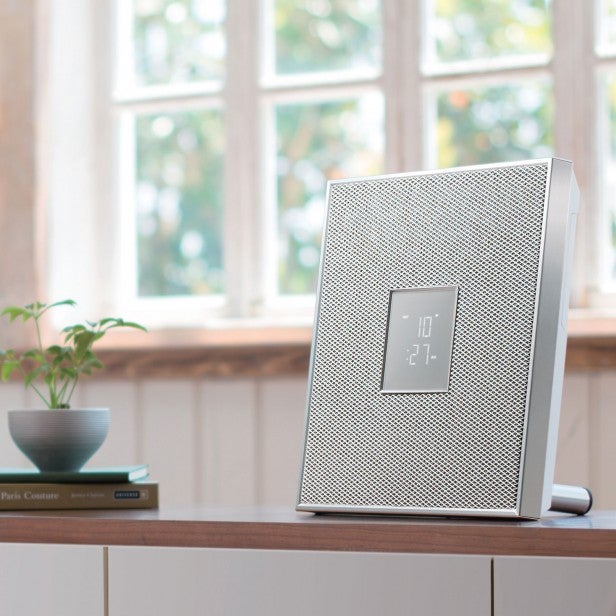
Spotify playback isn’t handled by the MusicCast app – you have to launch the separate Spotify app and select the ISX-80 in the list of available devices, a feature only available to Spotify Premium subscribers.
The setup process posed no problems whatsoever, although on regular occasions the music cut out in the middle of a song with no explanation, forcing me to reset the connection by switching to another input and back again.
Yamaha ISX-80 – MusicCast App
Yamaha’s multiroom app is a straightforward affair, using black backgrounds and simple white text. It’s a far cry from the sophisticated, colourful layout of Samsung’s multiroom software, yet Yamaha’s effort is every bit as slick and usable.
Launch the app and you’ll see a list of connected speakers or “Rooms”. You can change the names to make them easier to identify. For each speaker, it displays the name of the track playing, alongside a small cover thumbnail and an animated EQ icon.
The ISX-80 interacts seamlessly with other MusicCast speakers. Yamaha sent me a WX-030 to try out, and once connected to my network I had them synchronised in seconds.
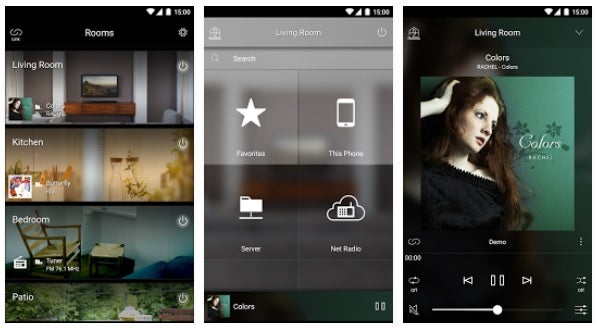
To group them, tap the Link icon at the top of the screen and select which speaker is the master. Select the speakers you want to link from the dropdown menu and music starts playing through both speakers.
Tap the relevant speaker and it whisks you to the input selection screen. There’s a Favourites section that lets you save up to 40 songs or 30 FM radio presets.
I tapped the Server option and delved into my NAS drive. The black and white lists are rudimentary but easy to navigate. Most impressively, the app scrolls through lengthy lists of tracks and albums quickly, unlike some rival apps that freeze after each swipe. Scroll too fast and it takes a few seconds to load the titles, but it’s an acceptable wait.
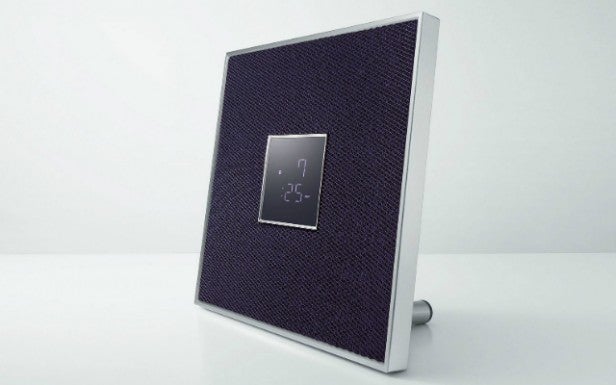
The Now Playing screen places cover art in the centre, with a volume slider and various controls beneath it. From here you can link speakers, save favourites, share a song to social media or adjust the EQ. Just a couple of minor gripes – the lack of a time slider means you have to hold down the track skip key to scan through a song, plus the search tool searches for songs only on the phone itself, not external libraries.
The ISX-80 also comes with a physical remote, which is handy if you want to quickly adjust the volume or skip tracks without having to fire up your phone. On the downside, it’s a fiddly credit card-style handset with blister buttons and an awkward layout; it’s fine if used sparingly.
Yamaha ISX-80 – Performance
The ISX-80’s sound won’t give audiophiles much to write home about but it’s thoroughly enjoyable, handling music with pleasing clarity and balance. It goes surprisingly loud for such a shallow speaker, only starting to chuff and distort when pushed to the upper reaches of the volume range. It won’t fill a large living room, but has more than enough puff for the bedroom.
Clear treble reproduction keeps hi-hats and percussion audible, while drums are reasonably punchy and there’s warmth to piano and keyboard chords. The ISX-80 has impressive rhythmic ability too, keeping intricate drum patterns and basslines nice and tight. This cohesion and intelligibility makes it a terrific system for day-to-day background listening.
However, there are limitations to the ISX-80’s abilities, little reminders of its design-led approach. The unorthodox design results in a narrow soundstage with a restricted stereo effect, while voices sound a little boxed-in, lacking the full-bodied tones of similarly priced wireless systems.
I also found the treble a little thin and bass output could be deeper and weightier, but for a stylish speaker that sits inconspicuously on a wall or shelf, the ISX-80 does a fine job.
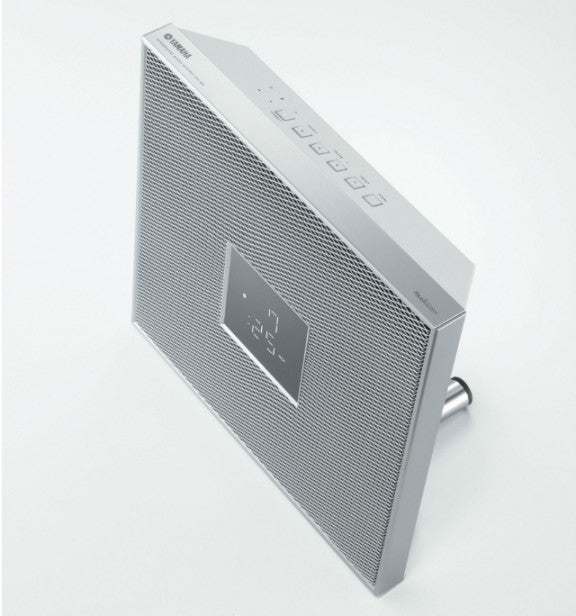
Should I buy the Yamaha ISX-80?
If you’ve fallen in love with the ISX-80’s chic, picture-frame styling and you’re not concerned about getting the absolute finest sonic performance for the money, then it’s certainly worth a punt. The idiosyncratic design is guaranteed to enhance any living space – provided you’re okay with the clunky clock display. The ability to hang it on the wall is a godsend, too, if you want to keep clutter to a minimum.
The ISX-80 is more than just a pretty face, though – it’s easy to set up and boasts a healthy list of features. Chief among these is MusicCast, which streams music from a decent range of sources and controls a multiroom system with minimum fuss.
But in terms of sound quality the ISX-80 lacks the sparkle, width and room-filling power of more conventional multiroom speakers such as the Denon Heos 7 and Samsung R5.
Verdict
Yamaha’s striking wireless speaker brilliantly blurs the line between technology and interior design, but there are better-sounding speakers available at this price.
Trusted Score
Score in detail
-
Performance 7
-
Features 8
-
Value 7
-
Sound Quality 7
-
Design 8
Features
| Supported Channels | 2 |
Connectors
| Stereo Line In | 1 |
| Power (Watt) | 2 x 15W |
Physical Specifications
| Height (Millimeter) | 302mm |
| Width (Millimeter) | 302mm |
| Depth (Millimeter) | 65mm |
| Weight (Gram) | 3.3kg |

